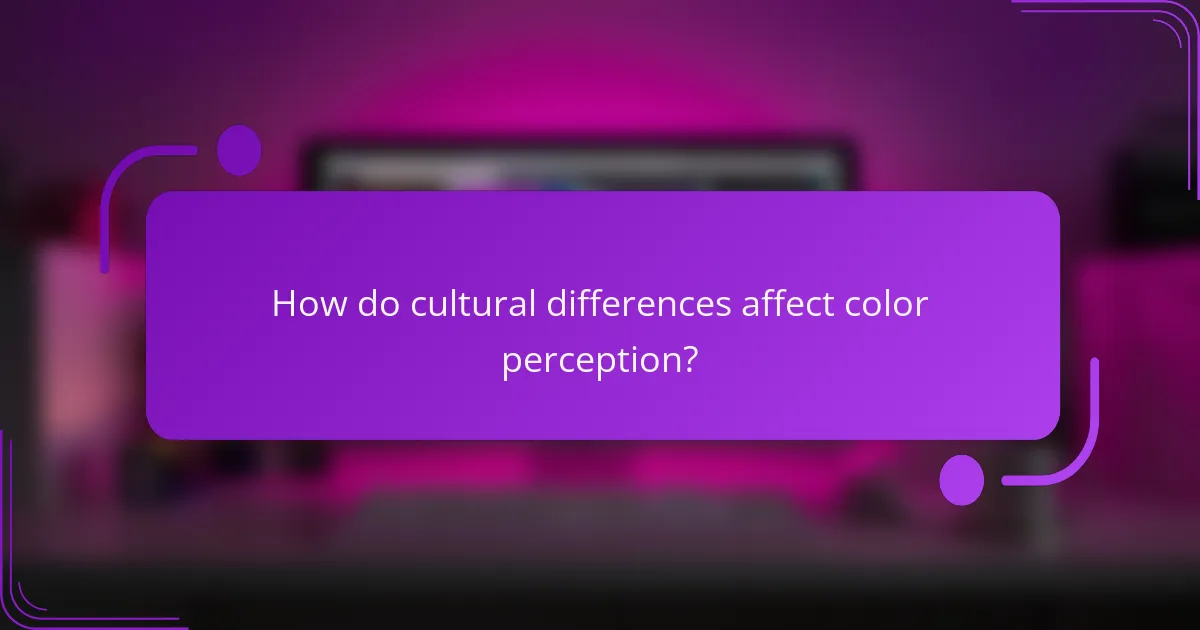Color schemes are a vital element in e-commerce, as they directly impact conversion rates by shaping user emotions and perceptions. A thoughtfully selected color palette not only enhances user experience but also strengthens brand identity, fostering deeper connections with consumers and driving sales. By focusing on clarity, emotional resonance, and accessibility, businesses can create effective color combinations that improve engagement and boost conversions.

How do color schemes impact conversion rates in e-commerce?
Color schemes significantly influence conversion rates in e-commerce by affecting user emotions and perceptions. A well-chosen color palette can enhance user experience, build brand identity, and ultimately drive sales.
Color psychology influences purchasing decisions
Color psychology plays a crucial role in shaping consumer behavior and purchasing decisions. Different colors evoke specific emotions; for instance, blue often conveys trust, while red can create urgency. Understanding these associations allows businesses to select colors that align with their brand message and target audience.
When designing an e-commerce site, consider how colors can guide users toward desired actions, such as making a purchase or signing up for a newsletter. For example, using contrasting colors for call-to-action buttons can make them more noticeable and encourage clicks.
Case studies on successful e-commerce color schemes
Several e-commerce brands have effectively utilized color schemes to boost their conversion rates. For instance, a well-known online retailer increased its sales by using a vibrant orange for its “Buy Now” buttons, which stood out against a neutral background. This simple change led to a noticeable uptick in user engagement.
Another example is a fashion retailer that adopted a minimalist color palette of black and white, which not only enhanced the site’s aesthetic but also improved the overall shopping experience. By focusing on product imagery against a clean backdrop, they successfully drew attention to their offerings, resulting in higher conversion rates.

What are the best color schemes for enhancing user experience?
The best color schemes for enhancing user experience focus on clarity, emotional impact, and accessibility. Effective combinations can improve readability, evoke feelings, and strengthen brand identity, leading to better engagement and conversion rates.
High-contrast color combinations improve readability
High-contrast color schemes, such as black text on a white background or yellow text on a blue background, significantly enhance readability. These combinations help users quickly absorb information, which is crucial for retaining attention on websites and applications.
When designing for readability, consider using a contrast ratio of at least 4.5:1 for normal text and 3:1 for large text. Tools like the WebAIM Contrast Checker can help ensure compliance with accessibility standards.
Color schemes that evoke emotional responses
Color schemes can trigger emotional responses that influence user behavior. For instance, blue often conveys trust and reliability, making it popular for financial services, while red can create urgency, which is effective for sales promotions.
To leverage emotional impact, select colors that align with your brand values and target audience. Conducting A/B tests can help determine which color combinations resonate best with your users and drive desired actions.

How can color schemes strengthen brand identity?
Color schemes play a crucial role in establishing and reinforcing brand identity by creating visual consistency and emotional connections with consumers. A well-defined color palette can evoke specific feelings, enhance recognition, and differentiate a brand in a competitive market.
Consistent color usage across platforms
Maintaining consistent color usage across various platforms is essential for solidifying brand identity. This includes ensuring that the same colors are used on websites, social media, packaging, and advertising materials. Consistency helps consumers easily recognize a brand and fosters trust.
To achieve this, brands should create a style guide that outlines their color palette, including primary and secondary colors, along with specific color codes (like HEX or RGB values). This guide should be accessible to all team members involved in marketing and design.
Examples of brands with strong color identities
Several brands exemplify the power of color in establishing a strong identity. For instance, Coca-Cola’s iconic red is instantly recognizable and evokes feelings of excitement and happiness. Similarly, Tiffany & Co. uses its distinctive robin’s egg blue to convey luxury and exclusivity.
Other notable examples include McDonald’s golden arches, which symbolize fast food and convenience, and Starbucks’ green, representing sustainability and freshness. These brands have effectively integrated their color schemes into their overall marketing strategies, making them memorable and impactful.

What factors should be considered when choosing a color scheme?
Choosing a color scheme involves understanding how colors affect user experience, brand identity, and conversion rates. Key factors include the target audience, industry standards, and current design trends.
Target audience demographics
Understanding the demographics of your target audience is crucial when selecting a color scheme. Different age groups, genders, and cultures often associate specific colors with varying emotions and meanings. For instance, younger audiences may prefer vibrant colors, while older demographics might lean towards more muted tones.
Consider conducting surveys or focus groups to gauge color preferences among your audience. This feedback can guide you in selecting a palette that resonates well and enhances engagement.
Industry standards and trends
Each industry has its own color conventions that can influence consumer expectations. For example, the tech industry often uses blue to convey trust and reliability, while the food industry might favor warm colors like red and yellow to stimulate appetite. Aligning your color scheme with these standards can improve user perception and brand recognition.
Staying updated on design trends is equally important. Colors that are popular today may not be effective tomorrow. Regularly review industry reports and competitor websites to ensure your color choices remain relevant and appealing.

How do cultural differences affect color perception?
Cultural differences significantly influence how individuals perceive colors, impacting emotional responses and associations. For instance, while white symbolizes purity in some cultures, it may represent mourning in others, affecting branding and marketing strategies.
Regional color preferences in marketing
Understanding regional color preferences is crucial for effective marketing. In Western countries, blue often conveys trust and reliability, making it popular among financial institutions. Conversely, in many Asian cultures, red is associated with good fortune and is frequently used in branding to attract customers.
When designing marketing materials, consider local color associations. For example, green is commonly linked to health and wellness in the U.S., while in some Middle Eastern countries, it represents nature and fertility. Tailoring color choices to regional preferences can enhance engagement and conversion rates.
Case studies on global brands adapting color schemes
Global brands frequently adjust their color schemes to resonate with local markets. Coca-Cola, for instance, uses red as a primary color worldwide, but in certain Asian markets, it incorporates gold to align with cultural values of prosperity and celebration.
Another example is McDonald’s, which adapts its branding colors based on regional tastes. In India, the brand has introduced green to its logo to reflect vegetarian offerings, appealing to local dietary preferences. These adaptations demonstrate the importance of cultural sensitivity in color choices for brand identity.

What tools can help in selecting color schemes?
Several tools can assist in selecting effective color schemes, enhancing user experience and brand identity. These tools allow users to generate palettes, find inspiration, and ensure color harmony across digital platforms.
Adobe Color for palette generation
Adobe Color is a powerful tool for generating color palettes based on various color theory principles. Users can create custom palettes or explore existing ones, making it easy to find complementary colors that align with brand identity.
When using Adobe Color, consider the color wheel options such as analogous, monochromatic, or triadic schemes. This flexibility allows for tailored palettes that can evoke specific emotions or reactions from users.
To get started, simply select a base color and explore the suggested palettes. Remember to test your chosen colors for accessibility, ensuring they are legible and visually appealing across different devices.
Coolors for color scheme inspiration
Coolors is an intuitive tool designed for quick color scheme inspiration, allowing users to generate and save palettes effortlessly. With its user-friendly interface, you can lock in colors you like and shuffle others to discover new combinations.
Coolors also offers features like exporting palettes in various formats, which is useful for web design projects. You can easily share your palettes with team members or clients, facilitating collaboration and feedback.
When using Coolors, consider the context of your design. Aim for a balanced palette that reflects your brand’s personality while ensuring it resonates with your target audience. Regularly revisiting and updating your color schemes can keep your brand fresh and engaging.

What are the emerging trends in color schemes for 2024?
In 2024, color schemes are shifting towards minimalist designs and dynamic palettes that enhance user experience and brand identity. These trends focus on simplicity and adaptability, allowing brands to create a more engaging and memorable presence online.
Minimalist color palettes gaining popularity
Minimalist color palettes are becoming increasingly popular as brands aim for clarity and elegance. These palettes typically consist of a limited number of colors, often featuring neutral tones complemented by one or two accent colors. This approach helps create a clean and cohesive look that enhances user experience.
When implementing a minimalist color scheme, consider using shades that evoke the desired emotions and align with your brand identity. For example, soft blues and greens can convey calmness, while bold reds and yellows may evoke excitement. Aim for a balance that resonates with your audience.
Use of dynamic color schemes in web design
Dynamic color schemes are gaining traction in web design, allowing websites to adapt their colors based on user interactions or environmental factors. This trend enhances user engagement by creating a more personalized experience. For instance, a website might change its color scheme based on the time of day or user preferences.
To effectively use dynamic color schemes, consider tools that allow for real-time adjustments without overwhelming users. Ensure that the transitions are smooth and maintain readability. Testing different color combinations can help identify what resonates best with your audience, ultimately improving conversion rates.
